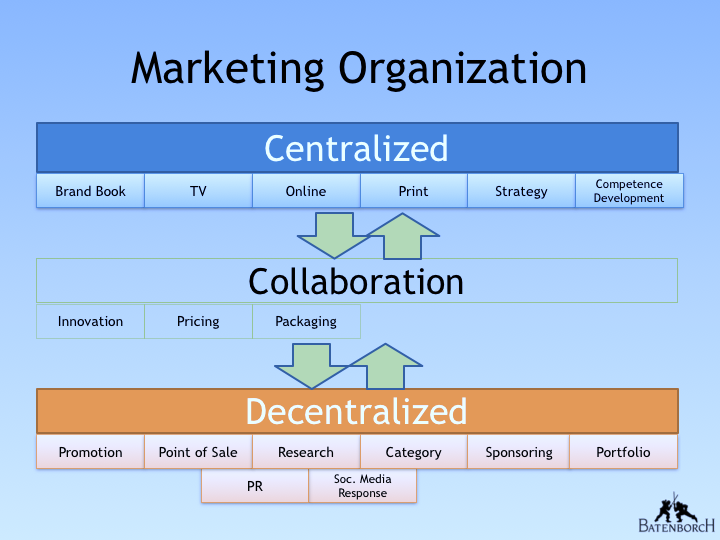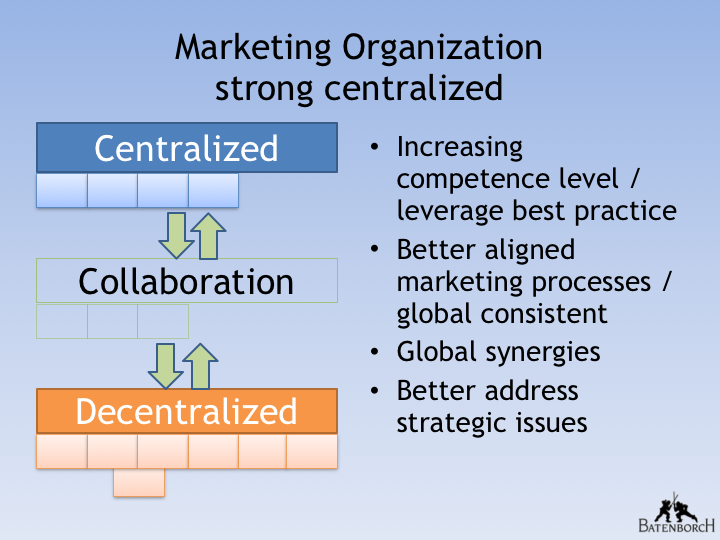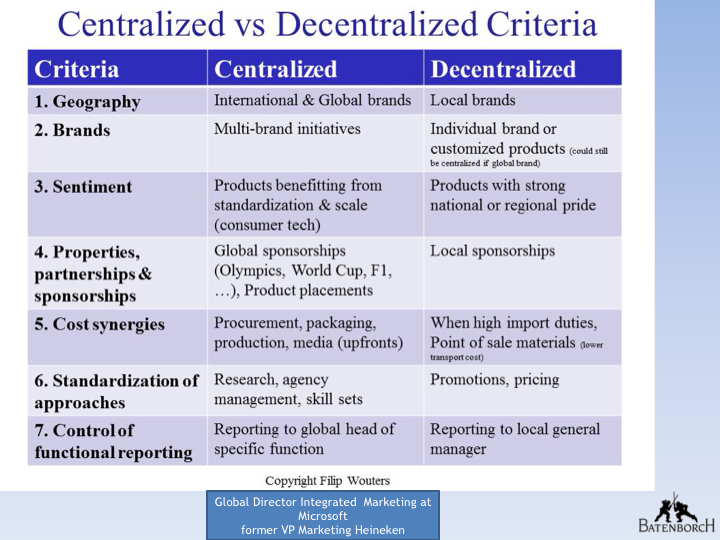The road up or down
In the aftermath of economic pressure we see a strong tendency for centralization. In an effort to increase strategic and operational control, to enforce alignment and to reduce costs. This drive for centralization also occurs in many marketing organizations and can be seen on local level but more often on international level. Multinationals restructure their marketing organization on central global head quarters and sometimes in addition on a regional level. In a phase of centralization, more task are being defined and handled by the central office.
The local organization will be organized and optimized for execution and activation. Consequently the roles of the marketeers on both levels change. The last time we encountered a strong tendency for centralization was in 2003. So we have had a relatively long period without strong centralization drives. This might be the reason why today it is being perceived as (very) hard by most local marketeers.
Functions to centralize or decentralize
We distinguish three levels. A central level, a local level and a level where strong collaboration between local and central level is needed. Functions we often see centralized can be summarized under brand book, the marketing strategy, competence development, tv, online and print. On the local level, decentralized, we see promotion, point of sale development, category management, portfolio management, trade marketing, market research, sponsoring, pr and social media response. Functions where we see strong collaboration between local and central level are innovation, pricing, packaging. The subjects / functions mentioned above are certainly not all. Other marketing functions and responsibilities can and should be considered.









